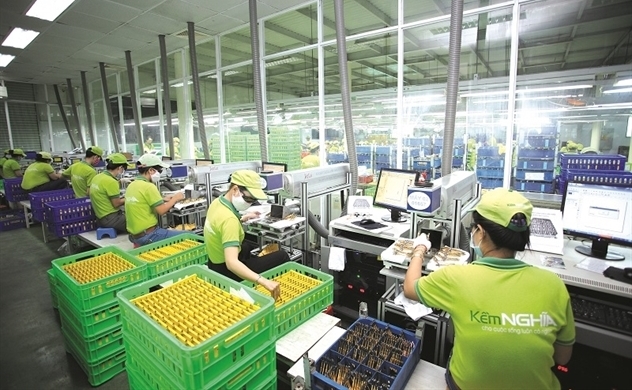“The private economic sector makes up 42 percent of GDP, 30 percent of the state budget collection and uses 85 percent of the labor force. The sector deserves to be recognized, protected and encouraged,” said PM Nguyen Xuan Phuc.

The topic for discussion now is how to encourage the private sector development.
Some economists believe that the quickest way to restructure the economy is creating private economic groups which act as the motive force that leads the economy. The government, in its resolutions and policies, also put emphasis on the development of large economic groups of international stature, called ‘super conglomerates’, like chaebols in South Korea.
|
The government, in its resolutions and policies, also put emphasis on the development of large economic groups of international stature, called ‘super conglomerates’, like chaebols in South Korea. |
The economists pointed out that for a long time, the private sector was put at a disadvantage in comparison with state-owned enterprises (SOEs) and foreign invested ones (FIEs).
While the former can enjoy preferences in accessing resources, the latter can enjoy attractive tax and investment incentives as a part of the policy on encouraging FDI.
Only when all the economic sectors can play in a levelling playing field will private enterprises be able to grow.
“Fairness, no barrier and no preconception – these are the necessary principles for the private sector to develop,” said Nguyen Khac Quoc Bao, an economist.
In developing private sector, the South Korean chaebol model has been put into disccusion.
The starting point of the South Korean economy was similar to Vietnam’s. However, after tens of years of development, South Korean GDP per capita exceeded $30,000 in 2018, while Vietnam still struggles with the middle-income trap.
The big names such as Samsung, Hyundai Motor, Posco, Kia Motors and LG not only identify the South Korean economy, but also serve as a ‘power stick’ which helps South Korean penetrate and benefit from neighboring and world markets. Vietnam’s total GDP, $240 billion, is 2/3 of the capitalization value of Samsung.
However, an economist stressed that only reasonable policies will help develop the private sector. The unfair support in land and capital access may lead to crony capitalism and generate interest groups.
“The worst thing for the Vietnam’s market economy is the development of a private economy based on back-door businesses,” he said.
While some economists believe Vietnam needs to have chaebols of its own, some others prefer the Chinese development model. Lawyer Nguyen Tien Lap from NHQuang & Associates, arbitrator of the Vietnam International Arbitration Center, commented that the model is ‘sustainable and more suitable to Vietnam’s conditions’.
Vietnam aims to have at least 1 million businesses by 2020, 1.5 million by 2025, and more than 2 million by 2030.
Thanh Lich

VinGroup’s smartphone rolled out in Myanmar
VinSmart began selling its Vsmart smartphones in Myanmar on May 29, aiming to become the country’s first globally recognised smartphone brand.

VinFast automobiles to be sold in Russia
In addition to other Vingroup subsidiaries entering overseas markets, VinFast is planning to launch in Russia.
 No matter whether businesses are powerful conglomerates or small companies, they all need a healthy playing field.
No matter whether businesses are powerful conglomerates or small companies, they all need a healthy playing field.